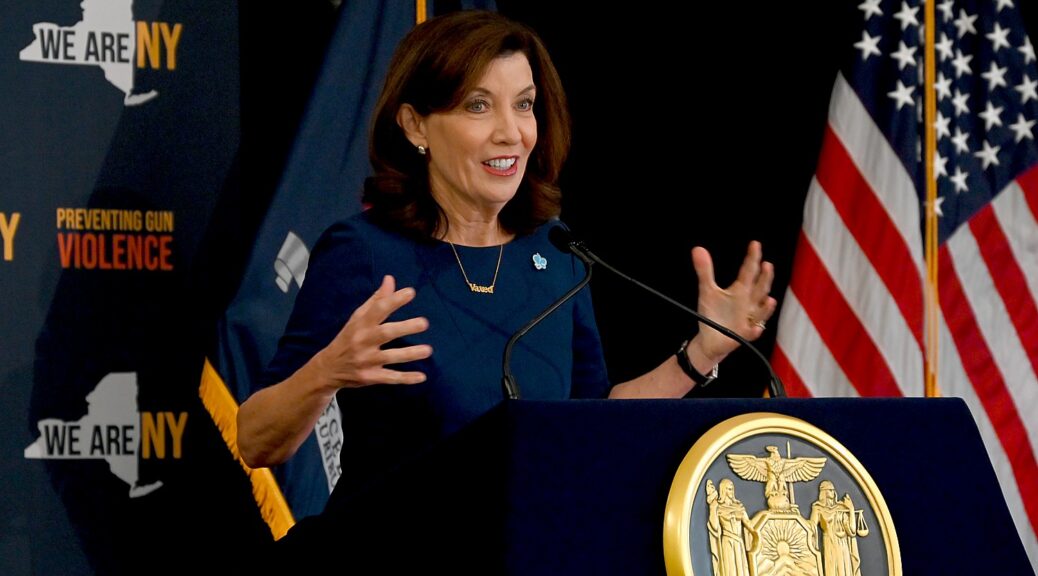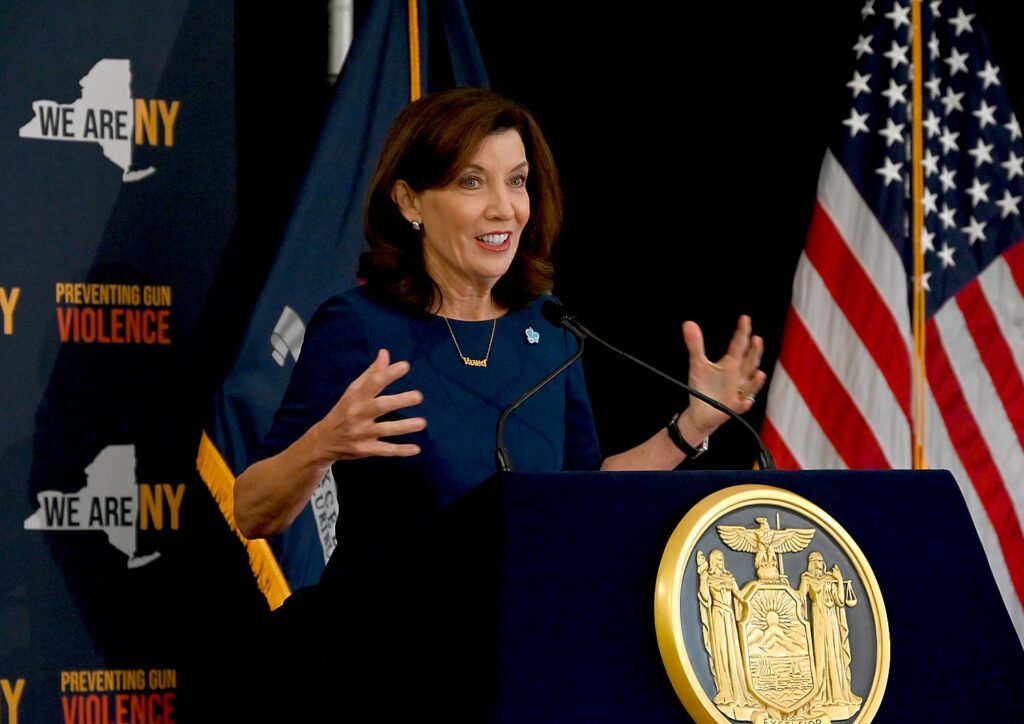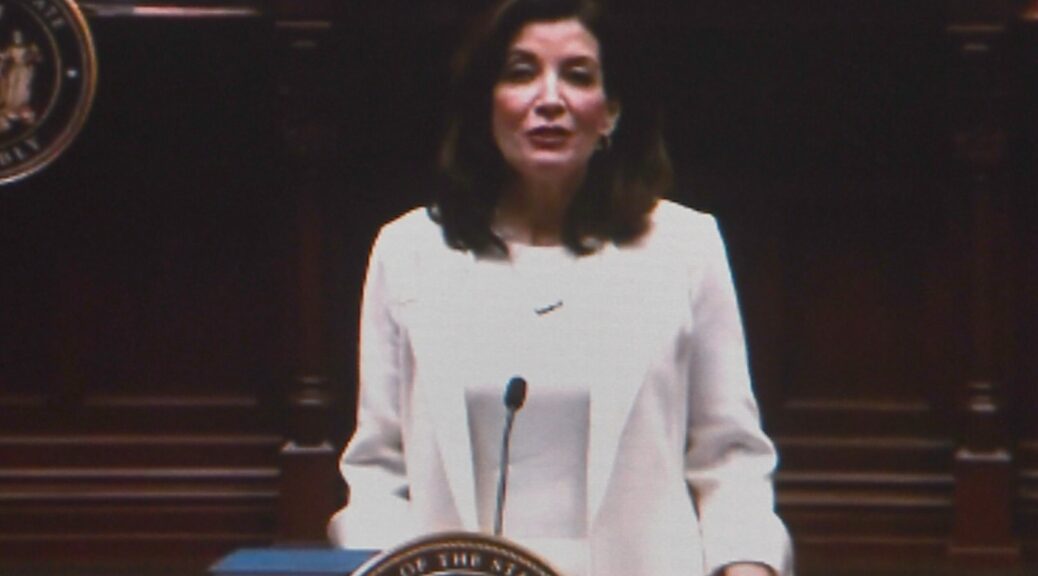
As Trump, Vance and the Republicans continue to lie about crime rates rising under the Biden-Harris Administration, the FBI and police officials released figures that show record declines, especially in violent crime which soared during Trump’s failed administration.
Last year, violent crime fell to a near 50-year low as murder rates fell 13% nationally and plummeted in major cities. This trend is continuing in 2024, with violent crime and the murder rate on track for the sharpest decrease in history.
This morning, new data in major cities from the Major Cities Chiefs Association show violent crime dropping further. The Harris Campaign pointed to declines in battleground states:
- Arizona: Phoenix has seen violent crime drop in 2024 and 2023; Mesa has seen violent crime drop in 2024
- Georgia: Atlanta saw violent crime drop in 2023, and assault and robbery are down in 2024; DeKalb County has seen violent crime drop in 2024
- Michigan: Detroit has seen violent crime drop in 2024 and last year had the fewest homicides in 57 years
- Nevada: Las Vegas has seen violent crime drop in 2024 and 2023
- Pennsylvania: Philadelphia has seen violent crime drop in 2024; Pittsburgh has seen rape and assault drop in 2024
The decline in crime due to the actions of the Biden-Harris Administration and its investments in community policing is being felt throughout the country.
President Joe Biden stated, “When Vice President Harris and I took office, our nation had just seen the largest increase in murders ever recorded during the previous Administration. Immediately, we got to work to make communities safer. Today, new data confirms that our efforts are working and violent crime is at a 50-year low. An independent organization of police chiefs from across our nation’s biggest cities released data showing that violent crime fell across every category in the first half of 2024. Homicides are down 17% – building on the largest-ever decline in the homicide rate nationally last year.
“This did not happen by accident. Our American Rescue Plan – opposed by every Republican in Congress – delivered $15 billion to cities and states to invest in public safety and violence prevention, keeping cops on the beat while working with community leaders to interrupt and prevent crime. I also signed the most significant gun violence legislation in nearly 30 years which is keeping guns out of dangerous hands by expanding background checks and helping states implement “red flag” laws.
“Americans are safer today than when Vice President Harris and I took office. We can’t stop now. That’s why I will continue to urge Congress to fund 100,000 additional police officers and crime prevention and community violence intervention programs, and make commonsense gun safety reforms such as a ban on assault weapons.”
Meanwhile, it is Trump who has demonstrated his willingness to defund police. As president, Trump proposed a $400 million cut to local law enforcement funding and oversaw the largest single-year spike in the murder rate in more than a century. Trump has demanded the defunding of federal law enforcement, while proposing using the FBI and Justice Department to go after his political enemies. His vice presidential pick JD Vance said, “I hate the police.” His Republican allies in Congress are calling to defund the Department of Justice, the FBI, the CIA, cut funding for cybersecurity
U.S. News & World Report Ranked Counties in Long Island, Hudson Valley and New York City Among the Top 25 Safest in America
Crime in New York State Is Down 6% Year over Year
Governor Hochul Has Invested over $800 Million in Crime-Fighting Initiatives
In New York State, for example, where Republican Nassau County Executive Bruce Blakeman, trying to position himself for elevation in Republican ranks fear-mongers on crime rates), Governor Kathy Hochul today highlighted ongoing declines in statewide crime as a new independent report ranked New York communities among the safest in the nation based on violent crime rates, emergency services and other key metrics. Eight counties across New York State, including counties in Long Island, the Hudson Valley and New York City, were recognized in the U.S. News & World Report ranking of “The Top 25 Safest Communities in America” – more than any other state in the nation. Four counties were among the top ten, and one county – Nassau – was ranked the safest in the nation.
“Public safety is my top priority and I’ve been laser-focused on fighting crime from the moment I took office,” Governor Hochul said. “Our approach is working, as murders, shootings, violent crime and property crime have declined statewide. But make no mistake: our work is not over, and I’ll continue working to ensure our state is safer for all.”
New York’s nation-leading performance in this new ranking reflects a broad and ongoing decline in crime. Statewide crime is down 6% year over year, according to data from both the New York State Division of Criminal Justice Services and NYPD CompStat.
The U.S. News & World Report analysis recognized the following counties among the Top 25 Safest in America – with many of them seeing significant year-over-year declines in crime for the first half of 2024:
- Long Island: Nassau – 18% decline; Suffolk – 13% decline
- Hudson Valley: Rockland – 26% decline; Westchester – 8% decline; Putnam – 15% decline in 2023 (2024 data pending)
- New York City: Brooklyn, Queens and Staten Island – combined 3.5% decline
As New York continues to make nation-leading progress in tackling crime, Governor Hochul has also continued to make historic investments in new crime-fighting initiatives statewide, amounting to more than $800 million in investments in tested programs and initiatives.
The Governor’s investments also include nationally recognized initiatives administered by the state Division of Criminal Justice Services (DCJS), which provides funding, training and technical assistance to law enforcement agencies and community-based organizations in communities hardest hit by gun violence and violent crime:
- Nearly $36 million for the Gun Involved Violence Elimination (GIVE) initiative. Through GIVE, DCJS helps 28 police departments in 21 counties implement evidence-based strategies that have proven to be successful at reducing gun violence, including Problem-Oriented Policing, Hot-Spots Policing, Focused Deterrence/Group Violence Intervention, Street Outreach, and Crime Prevention through Environmental Design. These strategies focus on the few people and places that are responsible for most of the violence and engage the broader community to build trust. GIVE also funds district attorneys’ offices, probation departments, and sheriffs’ offices in those counties.
- $21 million for the SNUG Street Outreach program, which uses a public health approach to address gun violence by identifying the source, interrupting transmission, and treating individuals, families and communities affected by violence. Community-based organizations and hospitals operate the program in 14 communities and employ nearly 200 outreach workers, social workers and case managers. Outreach workers are credible messengers who have lost loved ones to violence or have prior justice system involvement. They respond to shootings to prevent retaliation, detect conflicts, and resolve them peacefully before they lead to additional violence. Social workers and case managers work with individuals affected by community violence, including friends and family. DCJS also supports New York City’s violence interruption efforts, providing $5 million for its Crisis Management System (CMS) so it can bring those programs to scale.
- $18 million for the state’s unique network of Crime Analysis Centers, which analyze, compile and distribute information, intelligence and data to local law enforcement agencies statewide. No other state has anything similar and the centers – operated in partnership with local law enforcement agencies in 10 counties and New York City – are hubs of state and local efforts to deter, investigate, and solve crimes. Last year alone, staff handled more than 90,000 requests for assistance, helping agencies solve everything from retail theft to murders.
- Up to $20 million for Project RISE, a unique funding model that convenes community stakeholders to respond to gun violence, invest in solutions, sustain positive programming, and empower communities. In its first year, the initiative supported 99 organizations, including 74 small, grassroots programs, many of which had never received state support fort their work. Programs and services funded by RISE include academic support, employment services, mentoring, and delinquency/violence prevention.
“Governor Hochul’s comprehensive investment in programs and strategies to address the pandemic-era increase in crime is paying dividends,” New York State Division of Criminal Justice Services Commissioner Rossana Rosado said. “The DCJS budget is the largest in its history, allowing us to provide record-level funding to law enforcement agencies and community-based organizations addressing the causes and consequences of crime. I want to recognize our local partners for their tremendous efforts and my staff for their commitment to this important work.”
See also:
Facts Belie Republican Lies about Democrats’ Record on Crime, Immigration
__________________________
© 2024 News & Photo Features Syndicate, a division of Workstyles, Inc. All rights reserved. For editorial feature and photo information, go to www.news-photos-features.com, email editor@news-photos-features.com. Blogging at www.dailykos.com/blogs/NewsPhotosFeatures. ‘Like’ us at facebook.com/NewsPhotoFeatures, Tweet @KarenBRubin








